Performance expectation of NFY, PFY and spandex in 2024
Prices of polyester, nylon and spandex fiber all increased after the Spring Festival holiday in 2024, especially polyester and nylon fiber. By now, price of mainstream NFY and PFY varieties has rose by above 5% over end-2023. Most fabric mills and textiles and apparel producers shut down for Spring Festival holiday. Prices of chemical fibers still moved up with weak supply and demand, mainly stimulated by cost side, especially when oil price was pushed up by around 10% since Jan 2024 affected by the Red Sea tension.
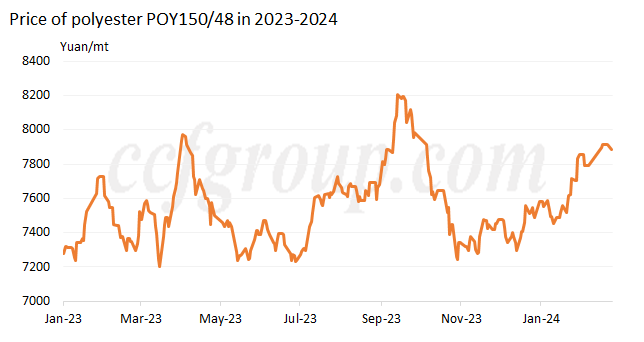
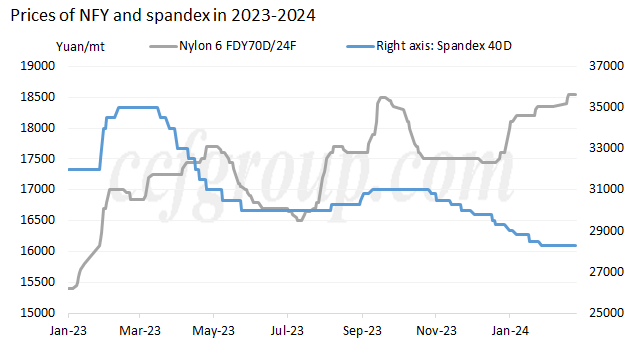
As for profit, the chemical fibers were largely profitable in Jan-Feb, 2024. The cash flow of mainstream PFY, NFY and spandex improved in Jan-Feb, 2024 over Q4 2023. Spandex plants even turned to see profit from suffering losses.
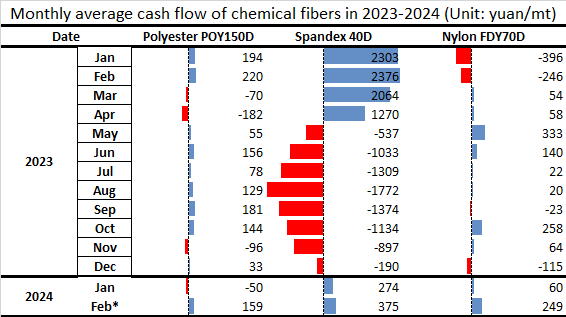
Impacted by the Spring Festival holiday, the supply and demand of chemical fibers both decreased in Jan-Feb, 2024, while the inventory of various fibers was slightly different.
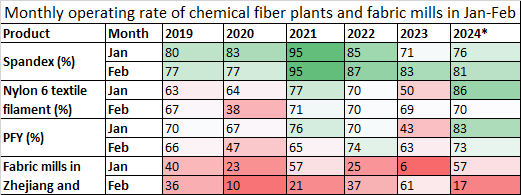
The inventory of NFY, PFY and spandex reduced at first and then accumulated since 2024, mainly because downstream buyers intensively restocked before the Spring Festival holiday and the inventory piled up during the Spring Festival holiday. Compared with the inventory in early-Jan, the inventory of spandex and NFY inched down and that of PFY climbed up.
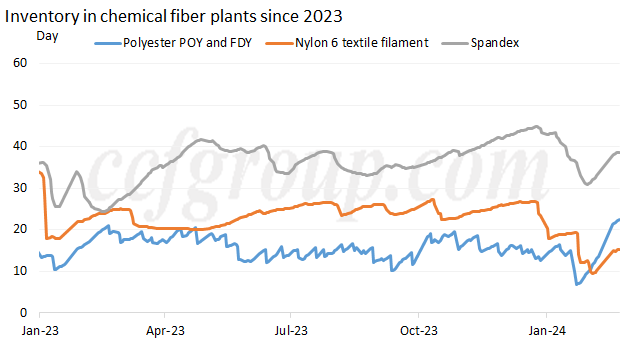
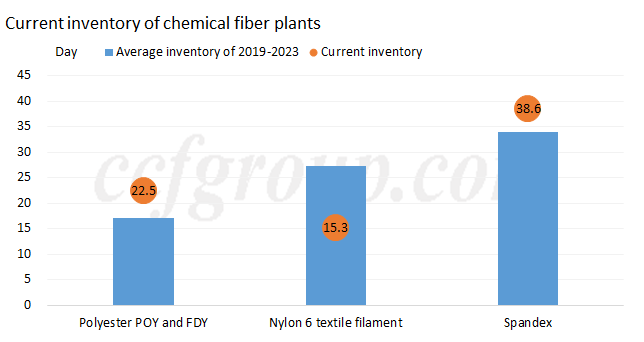
In terms of the future market outlook, the absolute price of chemical fibers will mainly follow the energy chemical products, especially high correlation between polyester fiber and crude oil. Analyzing multiple dimensions that will impact changes in the crude oil market in 2024, important factors or events include the Red Sea crisis, the Russia-Ukraine war, OPEC+ production policies, global economic strength, Federal Reserve interest rate cuts and US elections etc. In the first quarter, the Red Sea crisis will be the main driving force for oil price increases. Even if the Israeli-Palestinian conflict and the Red Sea crisis are resolved, Western countries will revert to increasing their support for military actions in Ukraine. The intensity of the Russia-Ukraine conflict will intensify again, providing support for oil prices.
In the second quarter, OPEC+ production policies and global economic strength will be key forces influencing the trend of oil prices, with oil prices expected to decline. Currently, prices of oil and chemical fiber industry are relatively high, with short-term cost support for chemical fiber prices remaining strong. From a profitability perspective, the extent to which prices follow remains limited by supply and demand and inventory constraints. Looking at the post-Chinese New Year period, among PFY, NFY and spandex, PFY and spandex prices may be dragged down more by factory inventory, although the inventory has not exceeded historical highs, still relatively high in record; while NFY is relatively better, with inventory at relatively low levels.
In terms of downstream demand for chemical fibers, in the short term, with sufficient raw material stocking before the Spring Festival holiday and preparations for full-year labor support, the operating rate will still increase at the beginning of the year, with the high point expected to appear around Mar. The operating rate of fabric mills may exceed 80% in Jiangsu and Zhejiang, but the run rate from Mar to Apr will be limited by downstream orders and restocking enthusiasm. Downstream orders are still uncertain at this point, and industry participants have mixed expectations. Pressure mainly comes from two aspects: on the one hand, some spring and summer demand were placed before the holidays, and the enthusiasm in placing orders was affected by high post-holiday shipping costs; on the other hand, the enthusiasm for replenishing autumn and winter products is impacted by the high prices in the industry chain. The driving factors for improvement mainly lie in the estimation of the restocking cycle in overseas market and the further expectations for domestic consumption recovery. In terms of seasonality, Mar-Apr are mainly for producing and preparing for summer fabrics, possibly with more demand for nylon products.
In medium to long term, the supply growth rates of chemical fiber products in 2024 are estimated to be 2% for PFY, 9% for NFY and 30% for spandex. The fundamental of spandex may weaken and face more apparent pressure; as new units of PFY will be put into operation, weakening supply and demand may occur in the second half of 2024; after experiencing high capacity expansion in 2023, PFY market will face less pressure from capacity increase in 2024, mainly relying on competition between existing capacities, and the profitability mainly relies on the effective control of operating rate and inventory in 2024.
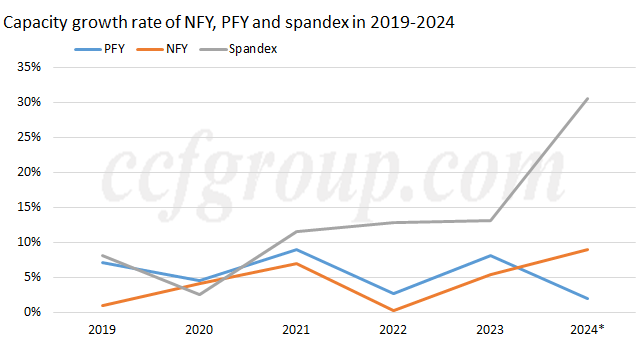
- Top keywords
- Cotton Price
- Cotton Futures Price
- Cotton Futures
- CZCE
- PTA Futures Price
- Chemical Fiber
- Polyester Prices
- Wool price
- PTA Futures
- Shengze Silk
- China
- Yarn Price
- price
- China Textile City
- Fibre Price
- Benzene Price
- Cotton
- Index
- Cotton Index
- PTA
- fabric price
- NYMEX
- Top 10
- textile industry
- Spot Cotton
- Cotton Yarn
- Polyester Price
- Futures
- PTA Price
- cotton yarn price

